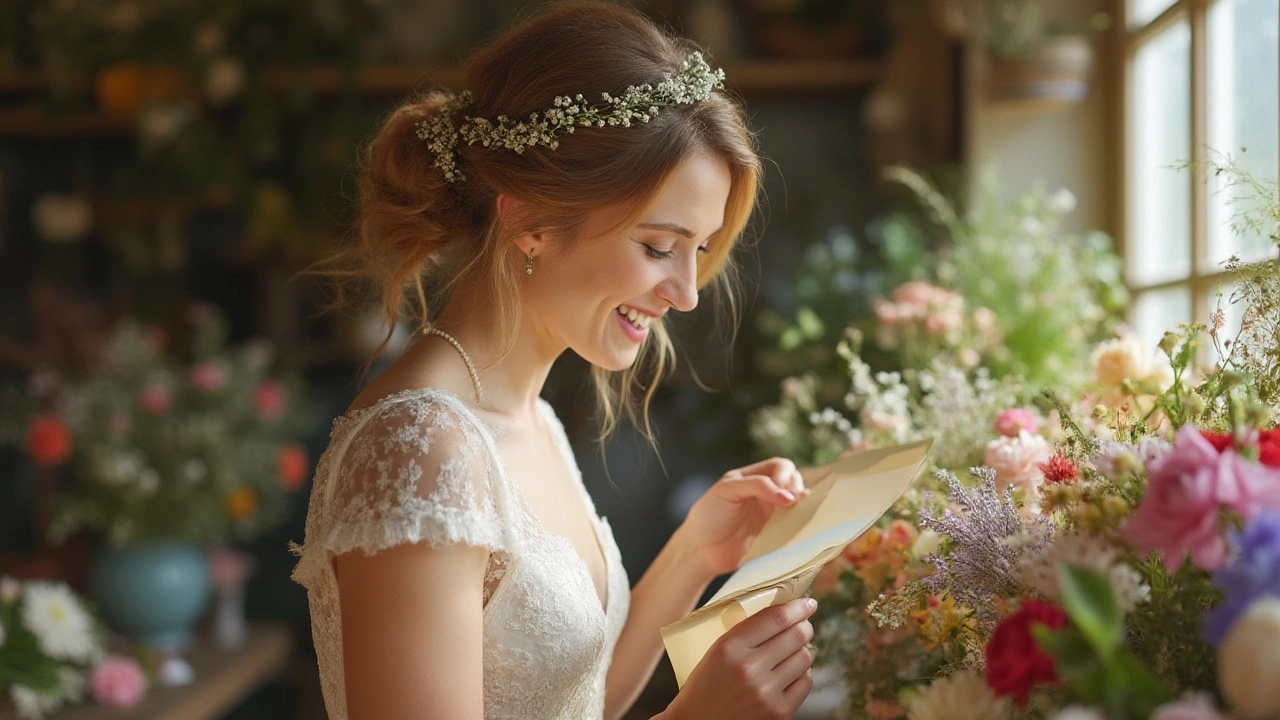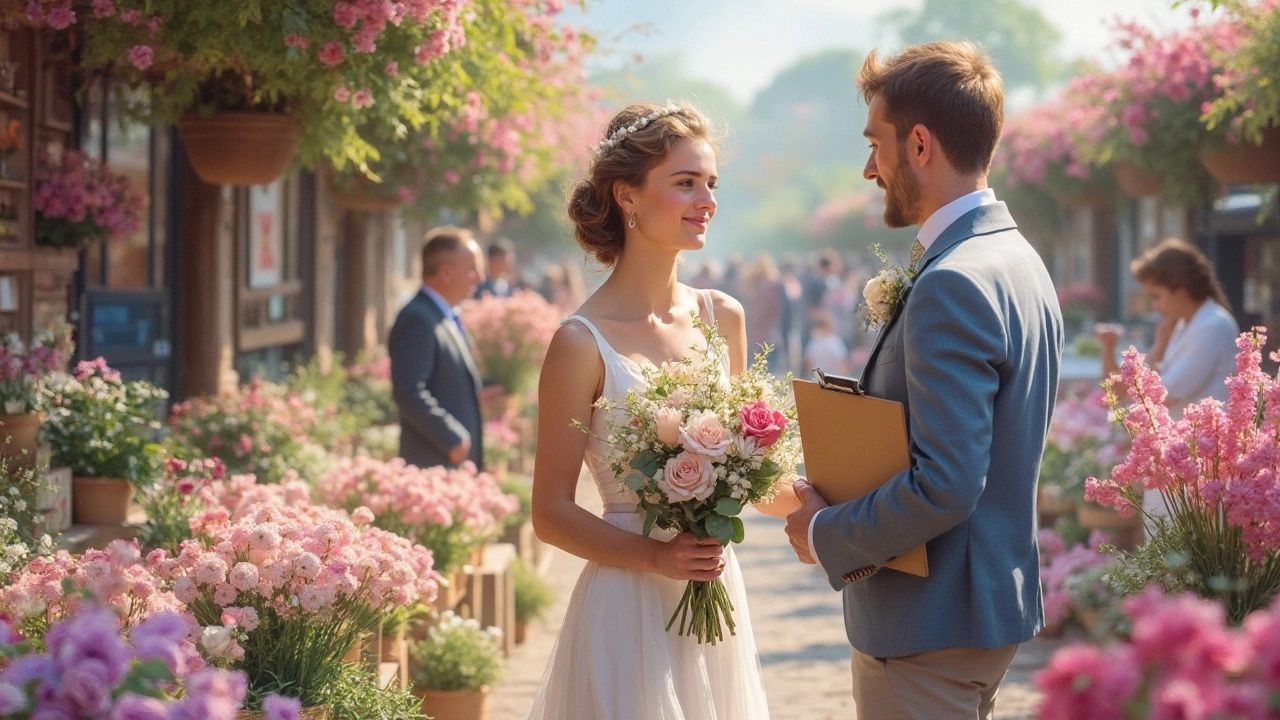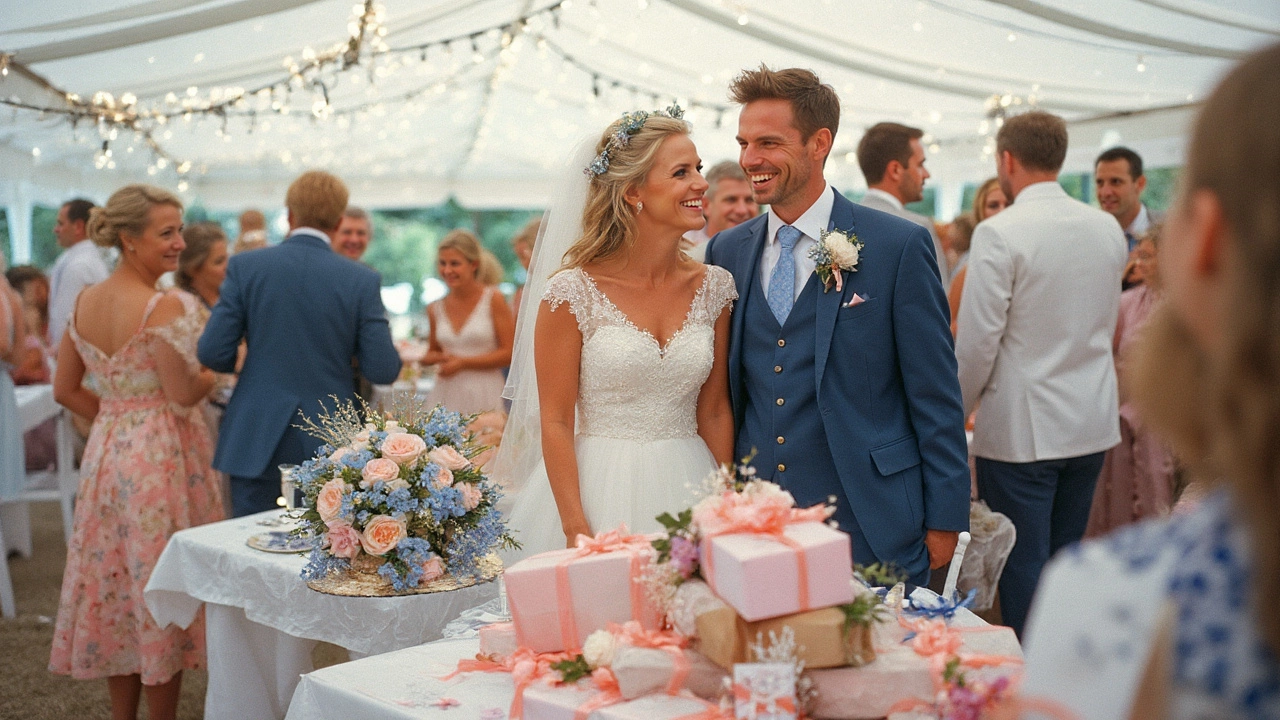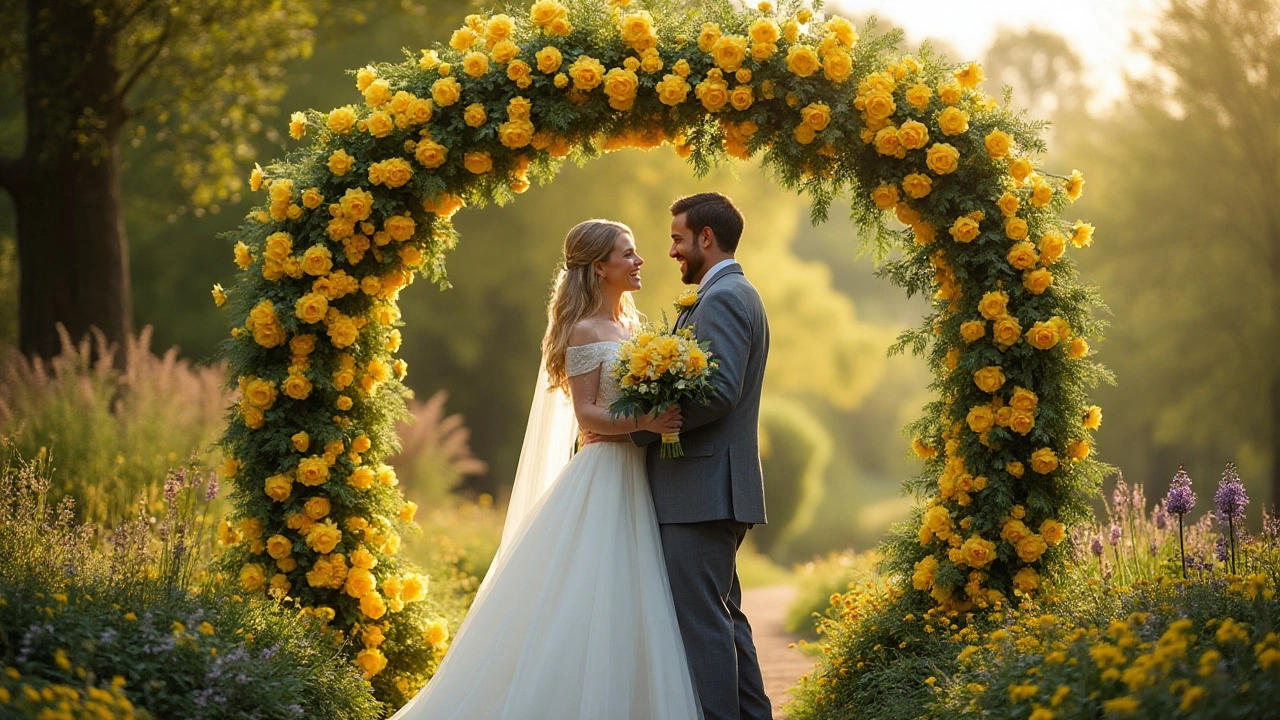Wedding Flowers: Tips, Trends, and How to Pick the Perfect Blooms
Flowers set the mood of your ceremony and add personality to every photo. Whether you’re planning a country garden wedding in the Cotswolds or a city hall celebration, the right flowers can make your dress and veil pop. Below you’ll find straight‑to‑the‑point advice so you can pick blooms that fit your style, budget, and season without feeling overwhelmed.
Choosing the Right Blooms
Start with the basics: look at your dress, veil, and venue colors. If your veil is ivory with lace, soft whites, blush, or pale lavender work beautifully. For a bold colored veil, pick a complementary hue rather than a matching one – think deep burgundy with a teal veil, or dusty blue with a soft pink veil.
Next, think about the season. Spring brings tulips, peonies, and ranunculus; summer offers roses, dahlias, and sunflowers; autumn is all about mums, asters, and dried wheat; winter favors amaryllis, pine cones, and evergreens. Picking in‑season flowers not only looks natural but also saves money.
Set a realistic budget early. A common rule is to allocate about 10‑15% of your total wedding budget to flowers. If you’re tight on cash, focus on a few statement pieces – a single cascading bouquet, a floral crown, or table runners – and fill the rest with greenery. Greenery like eucalyptus, rosemary, or ferns adds volume for a fraction of the price.
Talk to a local florist about bulk ordering or re‑using arrangements. For example, a ceremony arch can be taken apart and turned into reception centerpieces, cutting both waste and cost.
Latest Trends for 2025
Couples are moving toward more relaxed, “wild garden” looks. Think loosely tied bouquets that look like they were gathered from a meadow rather than tightly packed. Loose stems, mixed textures, and a few trailing vines give that effortless vibe.
Monochrome bouquets are also hot – choose one color family and play with different shades and shapes. All‑white arrangements with a touch of greenery create a timeless, elegant feel that pairs well with any veil style.
Personal touches make a big impact. Insert a small charm, heirloom brooch, or dried flower that means something to you. It turns a standard bouquet into a conversation starter.
Finally, sustainability matters. More brides are asking for locally sourced, pesticide‑free flowers or even renting blooms that are composted after the event.
When you match your flowers with your veil, keep scale in mind. A petite veil looks best with a small, delicate bouquet, while a full‑length cathedral veil can handle a larger, more dramatic arrangement. Don’t let the bouquet overwhelm the veil; they should complement each other.
Here’s a quick checklist to keep you on track:
- Identify dress and veil colors.
- Choose seasonal flowers.
- Set a 10‑15% budget limit.
- Pick one or two statement pieces.
- Discuss reuse options with your florist.
- Add a personal or sustainable touch.
Follow these steps and you’ll walk down the aisle with flowers that feel right, look stunning, and stay within budget. Happy planning!
Best Wedding Flower Colors: How to Pick Your Perfect Palette
Discover how to choose the perfect color for your wedding flowers. Get expert tips, ideas, and facts for building a stunning wedding floral palette.
Read moreIs Buying Your Own Wedding Flowers Cheaper?
The decision to buy your own wedding flowers can be exciting but a bit daunting. This article explores whether it's cheaper to go the DIY route for wedding flowers compared to hiring a florist. We'll look at the pros and cons of both options, share some practical tips, and highlight interesting facts to help you make an informed decision.
Read moreIs $500 the Right Wedding Gift Amount? A Fresh Look at Modern Traditions
Is a $500 wedding gift too extravagant, or just about right in today's world? This article delves into the factors that determine the 'right' amount to give, considering modern wedding expenses and cultural norms. Learn how your relationship with the couple and their unique needs can influence your decision. Plus, discover why spending on wedding flowers might affect how much you're willing to give. We offer practical insights for navigating this often-confusing aspect of wedding etiquette.
Read moreThe Symbolic Meanings of Yellow Flowers at Weddings: A Guide for Couples
Yellow flowers, known for their vibrant and cheerful hue, hold significant meaning when used in weddings. Associated with joy, friendship, and new beginnings, they add a touch of warmth to the wedding decor. Choosing yellow flowers for a wedding can symbolize happiness and a bright, hopeful future for the couple. This article explores the cultural meanings, significant flower types, design tips, and how to incorporate them into various wedding styles.
Read more


